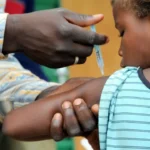Across Nigeria, the fight against HIV has moved beyond hospital walls and into the heart of communities. For years, the epidemic was defined by silence, stigma and fear. A diagnosis often felt like a sentence rather than a condition to be managed.
Today, that story is changing. Across Lagos, Bayelsa and Edo States, a revolution is unfolding–one that blends science with empathy to reach people once excluded by geography, poverty or shame. What was once a story of despair has become one of resilience and recovery.
The transformation goes beyond medical, it is deeply social and psychological. What was once a story of despair has become one of recovery, resilience, and hope. Through a network of initiatives that prioritise access, technology and empathy, Nigeria’s HIV response is gradually redefining what healing means, restoring both health, dignity and community trust.
A people-centred revolution
The USAID-funded ACE-6 project in Lagos, Bayelsa, and Edo employed technology, outreach, and empathy to re-establish trust between health systems and the people. It reached out to those who had previously been left behind for a long time.
During the period of the project’s completion in 2025, over two million people had been tested, tens of thousands had initiated antiretroviral therapy, and viral suppression levels were historic.
But beyond the numbers were individual achievements, men and women back in the workforce, mothers who could bring up children without fear and communities uniting around health rather than shame. ACE-6 made HIV response a movement of inclusion and every intervention a tale of life reborn.
Besides this project, several other core projects were initiated to extend and build on its success. The most important among them was LAMIS Plus, an electronic monitoring system that transformed patient care.
It exchanged paper records for live electronic ones, allowing health workers to monitor treatment progress, prompt reminders and respond to client needs in a timely manner.
The system significantly improved data quality and timely support for the patients. For the first time ever, health facilities could align care flawlessly, bridging the gap between hospitals, laboratories and communities.
Another landmark innovation is by the Nigerian Institute of Medical Research (NIMR), which became a technical centre for quicker laboratory diagnoses. Prior to ACE-6, patients took almost a month to receive results for viral load tests.
With enhanced testing facilities and mentoring under the project, turnaround time decreased from 30 days to merely three.
This allowed patients to initiate or modify treatment earlier, cutting the likelihood of complications and enhancing adherence. The institute then stood as a model of what works and a symbol of what local capacity development can achieve when adequately funded.
HIV innovation on the waterways
In Bayelsa riverine communities, boat-clinic outreaches were yet another eye-catching innovation. The mobile facilities cut through creeks and far-flung villages, conducting tests, counselling, and treatment for patients who had no access to care before.
By incorporating HIV services with gender-based violence (GBV) response and access-to-justice programmes, the programme began to meet the broader social realities that come with disease.
Also, the use of Differentiated Service Delivery (DSD) models further expanded access. With home refills, community testing and biometric verification systems, HIV care was personalised to find clients where they lived.
These systems maintained clients who moved in and out of states within the care system so that treatment gaps were prevented. By making a link between HIV testing and tuberculosis, maternal care, and cervical cancer screening, the programme promoted an integrated model of health—one that respected the individual more than their illness.
Together, these initiatives mark a new era for Nigeria’s HIV response. They show that when technology, compassion and imagination come together, healthcare is made more humane, more people-centred and more sustainable.
The hopeful narrative that began with the hearts of a few now tells a bigger truth: that dignity is just as critical to restore as lives are to save, and that the fight against HIV is being won not just with medicine, but with compassion and understanding drawn from each act of care.
Summary not available at this time.






